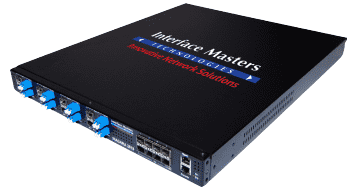The network monitoring space has been booming as of late. For instance, the real-time network monitoring market is slated to reach an impressive $670 million this year, according to Infiniti Research Limited. Furthermore, research from the Ponemon Institute shows that 91 percent of organizations have experienced an unplanned outage in the past 12 months, with the average cost per minute of downtime being $7,900 – representing a 41 percent increase from that of 2010.
This is driving vendors to build better and more intelligent switches to cater to higher bandwidth speeds and avoid any and all downtime, according to Frost & Sullivan’s “Global Network Monitoring Switches Market” report.
Bypass switch technology has become a rising player to help meet these business needs. Let’s take a closer look at what exactly this technology consists of.
What is a Bypass Switch?
Simply put, a bypass switch protects businesses from network failure. It does this by providing a foolproof access port for monitoring tools such as an intrusion prevention system (IPS), firewall, WAN optimization device or unified threat management system. If these appliances lose power, experience a software failure or are removed altogether, traffic can no longer flow through. A bypass switch removes this point of failure by automatically shifting traffic around the appliance when or if it is incapable of passing the traffic itself.
How Does the Technology Work?
A bypass switch has four ports; two are network ports that create an in-line connection within the network that is to be monitored. The latter two are monitor ports which are used
to connect the in-line monitoring appliance. The bypass switch passes all network traffic through the appliance; however, if it fails in any manner (i.e. loses power or is disconnected) the bypass switch will pass the traffic directly between its network ports. In other words, the technology enables network traffic to bypass the appliance altogether, ensuring that traffic is always seamlessly flowing.
What Are the Top Benefits of a Bypass Switch?
Guaranteed Business Continuity: You may be wondering what would happen if the bypass switch itself were to lose power. If this happens, traffic would still continue to flow through the link without any interruption. This means guaranteed business continuity for users, no matter the circumstance. The in-line appliance can even be removed or serviced without impacting network traffic.
Cost Savings: As evidenced above, the cost of downtime or any sort of failure is on the rise. Companies simply cannot afford the steep costs of network failure. According to the numbers from the Ponemon Institute, if a company was down for even five minutes it would lose an average of almost $40,000.
Safe and User-Friendly: Bypass switch technology is user-friendly, simple to operate and requires little maintenance upon installation.
What Kind of Companies/Industries Use a Bypass Switch?
Businesses across virtually every sector can rely on bypass switch technology if they want to ensure that traffic is smoothly traversing their networks. A sampling of these industries can include:
- Delivery services such as UPS
- Schools and universities
- Financial institutions
- Contact centers or service facilities
- Healthcare organizations and hospitals
Bypass switch technology has proven itself an invaluable tool for a number of businesses, ensuring that they operate at optimum efficiency to lock in customer satisfaction and loyalty – all while saving significant costs.
Interface Masters Technologies has for over 20 years been providing off-the-shelf innovative network security solutions with customization services to OEMs, Fortune 100 and startup companies. Our headquarters are located in San Jose, California in the heart of Silicon Valley where we are proud to design and manufacture all of our products. Based on MIPS, ARM, PowerPC and x86 processors, Interface Masters appliance models enable OEMs to significantly reduce time-to-market with reliable, pre-tested and pre-integrated networking solutions that can meet the most challenging security requirements.


